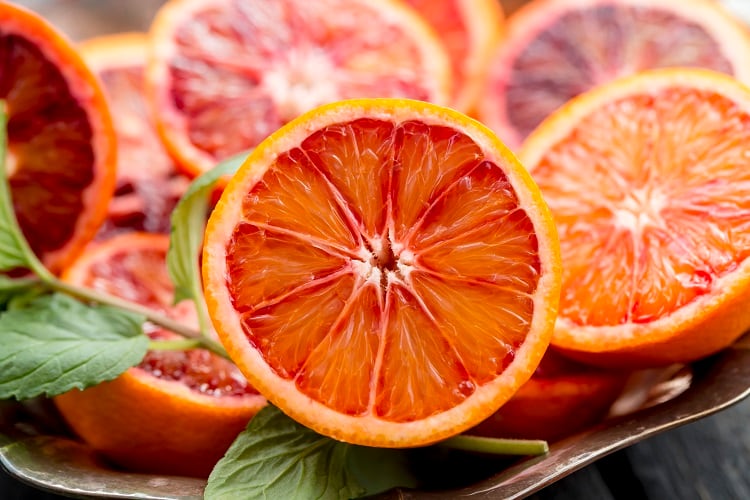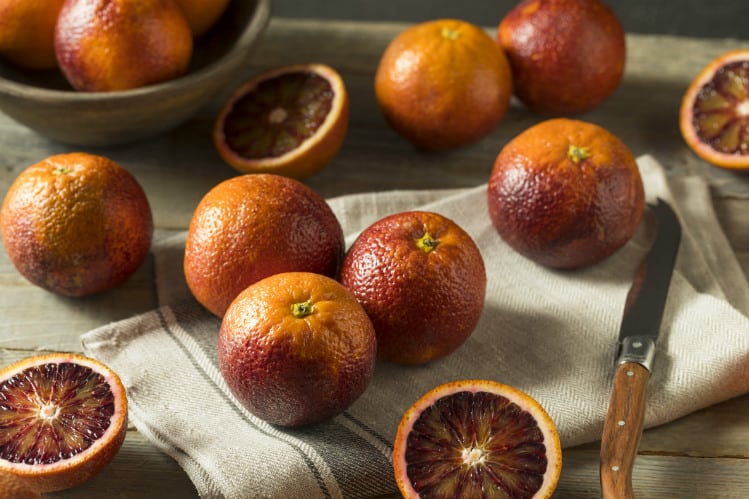Following reports that batches of blood oranges from South Africa were being passed off as Sicilian blood oranges of protected geographical indication (PGI), Italy has taken steps to increase the transparency of its citrus supply chains.
The ROUGE project, which stands for Red Orange Upgrading Green Economy, has been devised by a cohort of stakeholders, including the Blood Oranges of Sicily PGI Consortium.
The Consortium counts more than 600 members among producers and packagers, covering 6,500 hectares of certified cultivation. It is recognised by Italy’s Ministry of Agriculture, Forestry, and Food Policies in its protection of three varieties of blood orange: the ‘Moro’, ‘Tarocco’, and ‘Sanguinello’.
The Sicilian citrus industry
More than 50% of all blood oranges cultivated in Italy come from Sicily. In 2018, roughly one million tons of blood oranges out of a total 1,622,000 tons came from the Mediterranean’s largest island.
PGI Sicilian blood oranges are marketed from mid-December to mid-June, and grown exclusively in Catania, Syracuse, and Enna.
Aside from being eaten fresh, blood oranges are processed into juices and finished food products, such as jams, sweets, shortbreads, bitters, and almond milk. According to the Consortium, a growing number of food companies are requesting authorisation to use the IGP denomination.
Three varieties of Sicilian blood orange are IGP (protected geographical indication) registered:
- The Moro is the first to mature among the blood oranges and can be enjoyed from December to mid-March. The pulp is dark in colour, as is the juice, which is high yield with a ‘pleasant’ and ‘slightly acidic’ taste.
- Tarot oranges are larger fruits, with a spherical to oval shape. The peel is yellow-orange, and its flesh, which is similarly orange-yellow, is devoid of seeds. The Tarot produces a ‘medium’ amount of juice, which has an excellent taste. It can be eaten from mid-December until mid-May.
- The last of the oranges to mature is the Sanguinello, with the bulk of the harvest taking place between March and April. The fruits are more oblong or spherical in shape, and the peel is an ‘intense orange colour’ and red shades, notes the Consortium. The pulp is predominantly orange with streaks of blood colouring. It is ‘very juicy’ and has an ‘excellent taste’.
Digitally tagged fruit
The ROUGE project aims to not only safeguard the Sicilian citrus industry and the Made in Italy designation, but consumers.
Blood orange health benefits
The Blood Oranges of Sicily IGP Consortium highlights three major health benefits of blood oranges:
Vitamin C: The juice of one orange contains 50gm of vitamin C, which corresponds to more than 80% of the recommended daily allowance.
Pectin: Pectin is an indigestible carbohydrate. It contributes to the absorption of bad cholesterol in the human body.
Antioxidants: Anthocyanins, which are present in pigmented oranges, have been recognised as powerful dietary antioxidants.
Italian tech firm AmlavivA is providing the traceability platform for the ROUGE project, which works with blockchain technology – an open and secure digital ledger that enables a permanent record of transactions.
Agri-supply chain research body CREA will be responsible for collecting production data, and the University of Catania is generating economic models based on field data, to aid decision making.
According to AlmavivA, the system interacts between the Consortium’s portal – which monitors the PGI blood orange sector – and a smartphone app used by the consumer. The app provides the end-user information regarding the orange’s supply chain.
“Through an NFC [near-field communication] tag affixed to the fruit crates, the app allows for [the] monitoring [of] the production field thanks to a system that geo-localises the map supplied by a public source, the date of harvesting, and the conservation and distribution methods,” noted AlmavivA.
In short, the NFC tag securely retrieves the entire history of the PGI blood oranges, the firm explained.





